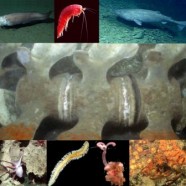“Baleinafric”
57th International Whaling Commission Ulsan, Korea. June 20-24, 2005.
With Japan playing the pied piper, a new factor of Intra-African unification and cooperation is in the making. Benin, Cameroon, the Ivory Coast, Gabon, Guinea, Mauritania, Morocco, and Senegal all support the Japanese initiative to develop whaling in the Southern Ocean Sanctuary. Togo, Mali, and Gambia are in the process of integration into the International Whaling Commission (IWC). Only South Africa voted against JARPA II (see press release in French “J’harponne II”, June 7, 2005).
Harpoon II
At the 57th session of the International Whaling Commission (IWC), to be held in Ulsan, South Korea from June 20th-24th, Japan will introduce JARPA II, a new long-term whaling programme in Antarctica, which would be made legal by a scientific research loophole. JARPA I (Japan’s Whale Research Program under Special Permit in Antarctica), in place since 1988, exclusively tracks and captures Minke whales. The annual quota of these “scientific” hunters was 300 whales. Since 1995, the total exceeds 400. All this takes place in the Antarctic Sanctuary established by the IWC in 1994.











